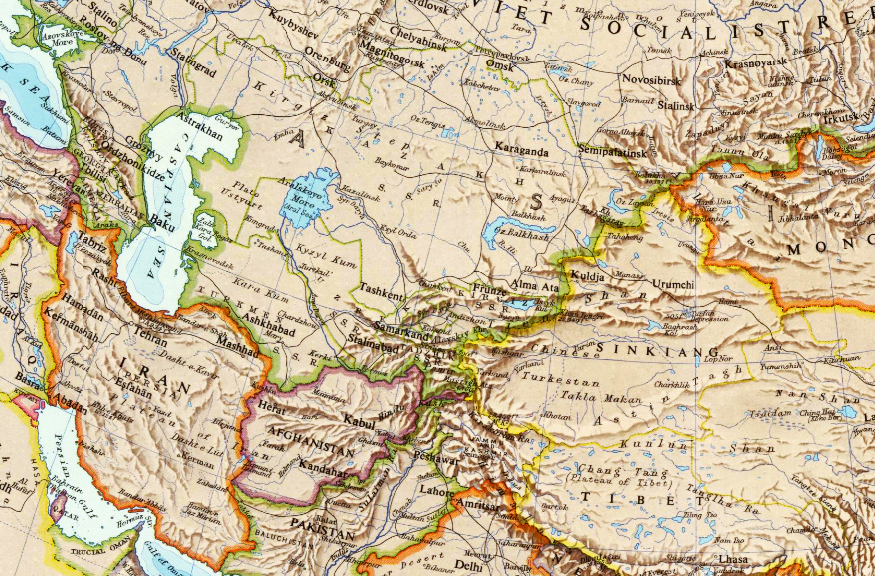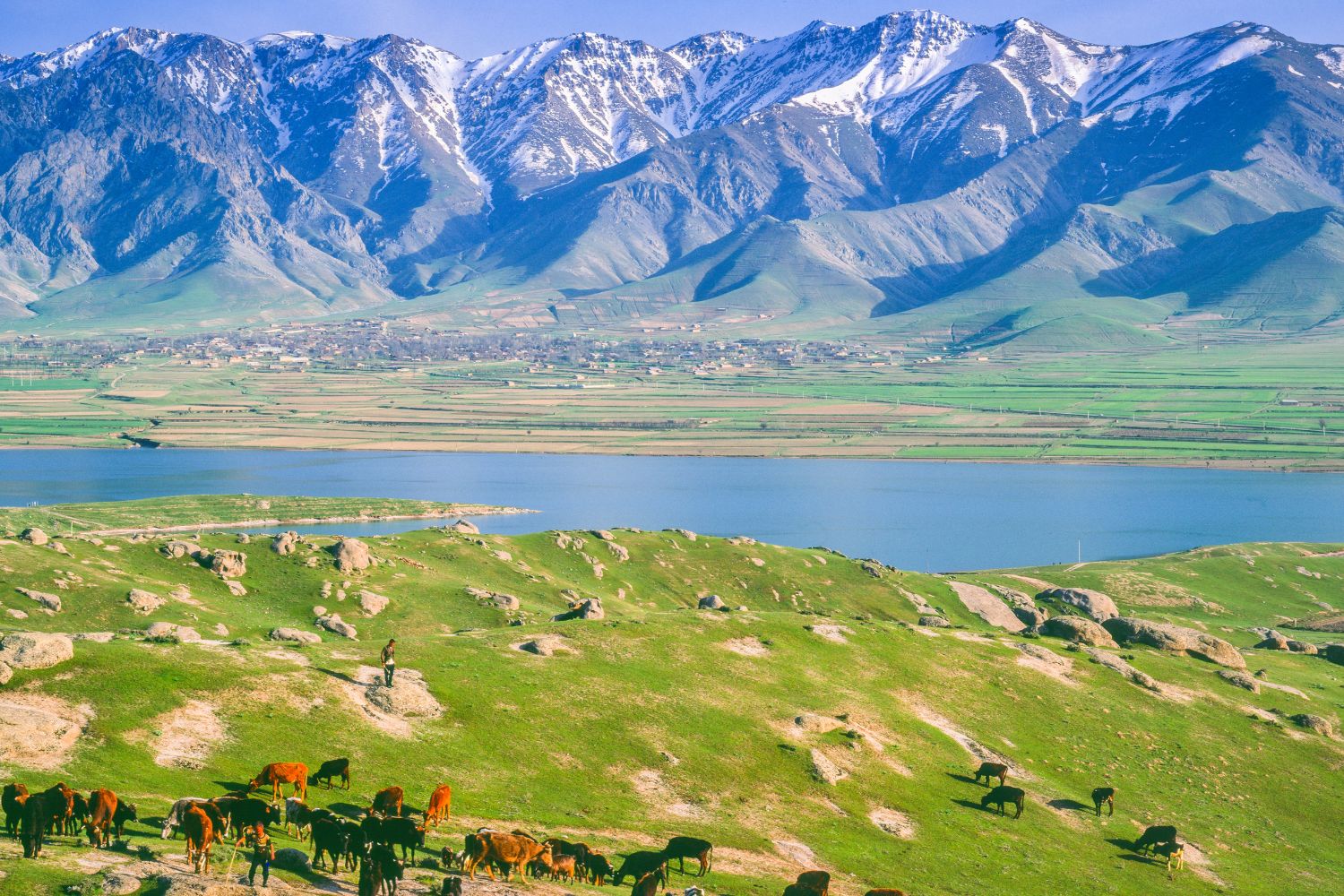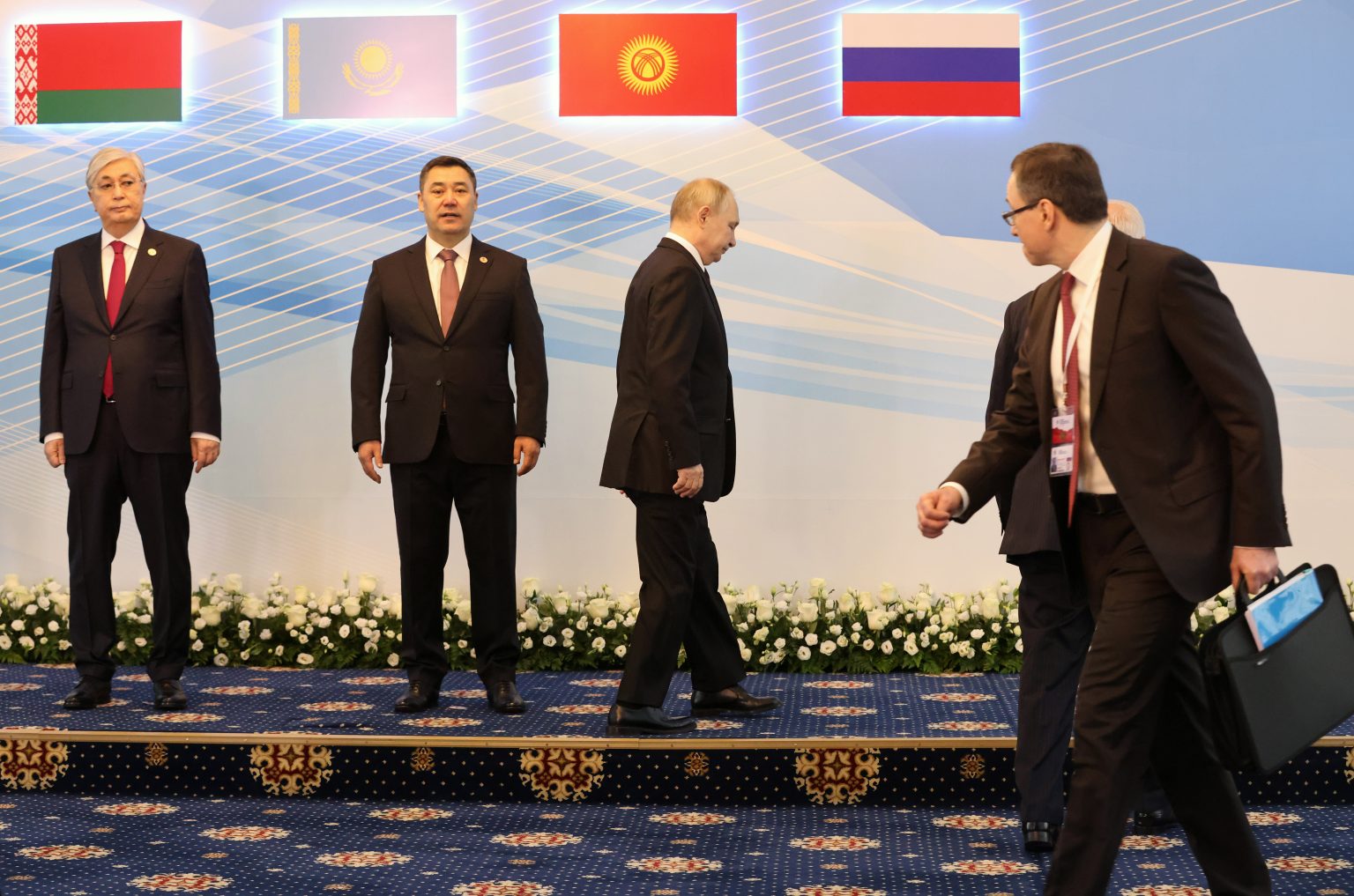The new chip road between East and West
How Central Asian countries help Russia buy sanctioned EU and US goods
The term “Central Asia” generally refers to five post-Soviet countries that many struggle to name: Uzbekistan, Tajikistan, Kirgizstan, Kazakhstan, and Turkmenistan. Despite some ready-made exotic imagery about the treasures of Samarkand (in Uzbekistan), the Silk Road first promoting trade between East and West in the Middle Age and the curse of Tamerlane,[1] few would be able to describe the area’s current socio-economic development. The capital cities are as unknown to us as the names of their five president-dictators, a strange mix of Russian patronymics and Turkic-sounding surnames.
The term “Central Asia” was made popular in the first half of the XIX century by Prussian naturalist and adventurer Alexander Von Humboldt, who was granted permission to explore what was then the Tzar’s Governorates of the Steppes and Turkestan. Generously financed by Nicholas I, Alexander Von Humboldt was subjected to strong censorship from the Russian authorities: in exchange for logistical assistance and the exemption from paying taxes, Humboldt had to remain silent on the social situation regarding the Russian people and the subjucated border populations in the Empire;[2] Von Humboldt had to concentrate only on inanimate nature and completely avoid discussing social issues and power abuse. He contributed to the discovery of the first diamond mine in Russia and was allowed to bring back a diamond for himself. Back in Prussia, he criticized tzarist censorship but reluctantly dedicated his work Central Asia (1843) to Nicholas I.[3]
Central Asia is the area where the enlightened and European Russian Empire (1721-1917) exerted its “right to civilize”, something other European powers did in their African and American colonies. Russian geographers and intellectuals always preferred the term srednaya Azia, middle Asia, referring to a spatial in-between amid Russia and the Caucasus or Russia and India.


A difficult construction of national identities between Russia and China
These five states were never part of a single political entity, with the exceptions of the Mongol Empire in the XIII century, and the Russian Empire (then Soviet Union) in the XIX and XX centuries. It was Stalin who carved out these five Soviet Socialist Republics from the former Russian Empire and gave them the borders and the names with which we know them today.
Resource-rich, authoritarian and scarcely populated countries where nomadism is still present, these countries struggled to invent a national identity after the collapse of the Soviet Union in 1991. The local elites’ effort to spread European style nationalism were unsuccessful: Ethnic groups still often relate more to their territory than to the central power. National heroes had to be dusted off artificially from as far back as the X century.[4] In 1992, a civil war erupted in Tajikistan opposing the newly independent government to ethnic and religious groups: When peace was restored in 1997, 150,000 had been killed.

Since 1991, efforts have been made to detach local cultures from Russian influence: the Cyrillic alphabet for the national language was abandoned in all five states. Kazakhstan’s former President, Nursultan Nazarbayev, insisted on using the term “Central Asia” and not “Middle Asia”, to abandon Moscow’s point of view on the area. Yet Russian remains the lingua franca in Central Asia and in big cities it is spoken and understood more easily than the “national” Turkophone idioms (with the exception of Tajikistan, where a Persian dialect is spoken). Moscow secures the loyalty of local elites by cultural and military bonds. Kazakhstan’s current President, Kasim Tokaev, literally owns his post to Vladimir Putin as Russian troops nipped in the bud the coup d’état in January 2022 organized by Nazarbayev’s clan.
Read also:
The geopolitical power of Kazakhstan
Kazakhstan as the exception: CSTO’s first armed conflict intervention
Both Moscow and Beijing include these countries in their regional multilateral institutions, in what can be seen as a common sphere of influence. China holds a significant percentage of Kirgizstan and Tajikistan’s public debt (43% and 35% respectively). The Shanghai economic cooperation includes several Central Asian cities and Moscow in its Belt and Road Initiative. Beijing’s silent genocide of the Uighurs, a Turkic ethnic group bordering with Kirgizstan, shows how China is able to separate human rights issues from economic integration to the Western-led global system, something that Russia is finding harder to accomplish. The two organizations created on Russian initiative, the Eurasian Economic Community (EurAsEc), and the Collective Security Treaty Organization (CSTO), appear to be the major institutional frameworks for Russian-Central Asian cooperation. Russia remains a common destination for Central Asian workers, whose remittances constitute an important part of their countries’ GDP. This is why, when Western trade sanctions targeted Russia, Central Asia provided a ready-made platform for Russian and local companies to bypass them.
The new chip road: reconnecting East and West
Central Asian countries’ import-export data for the year 2022 show something unusual.[5] Kazakhstan is the area’s economic heavyweight, with increasing economic ties with the West, balancing between cooperation with Moscow and independent foreign policy. Vladimir Putin and his Kazak homologue Kasim Tokaev do not like each other. Putin often publicly mispronounces Tokaev’s name to humiliate him; Tokaev, in turn, speaks out about his opposition to the violation of Ukraine’s national integrity, and in a November 2023 Kazakhstan-Russia summit in Astana, he surprised the Russian delegation by opening his speech in the Kazak language: Something never heard of in the “post-Soviet” Central Asian space. Yet, despite President Tokaev’s diplomatic efforts to carve out some geopolitical autonomy, Kazakhstan is serving the interests of Russia in the sanctions war.

A trade figure is revealing: the 2022 $10 billion increase in Astana’s imports and exports. Kazakhstan imported goods and services worth $10 billion that were rapidly re-exported somewhere else. In 2022, export to Russia increased by 25% and most of this growth is due to products that are not produced in Kazakhstan. Cars, vehicles, machinery, and mechanical components exported to Moscow quintupled in 2022. Moscow imported from Astana sanctioned smartphones for a minimum of $150 million, an 86-fold increase compared to pre-war period. Kazak export to Russia of semiconductors, that are much needed for weapons, went from $12,000 to $3.7 million. Export of washing machines went from 0 to a $30 million record, reversing bilateral trade: In 2021, it was Russia exporting washing machines to Kazakhstan for a total value of $13 million. Chips used in the EU to produce washing machines and refrigerators have been found in Russian tanks fighting in Ukraine.[6]
The 2022 steady 74% increase in trade with the EU[7] is not the result of a well-established project but hides a short-term ironic truth: the EU needs alternative energy sources, while selling sanctioned goods that Russia needs.
Kirgizstan’s poor population of seven million went suddenly crazy for luxury Western goods. In 2022, imports from the EU and US increased by 80% and 140% respectively.[8] A staggering 6,018% increase in imports of Swiss watches pairs with a 165% increase in imports of Italian leather products, 144% in French perfumes and 190% in US made spirits and alcoholic drinks.[9] But it is not just dolce vita. Kirgizstan has imported 38 times more chips from European companies, necessary for Russian war machinery and equipment, as well as components for planes and helicopters. War on the ground is also taken care of: Kirgizstan exported to Russia eleven times more Western viewfinders for weapons in 2022 than in 2021.
These countries also function as a base for Russian raw materials to rejoin the European market. Semi desertic Kirgizstan scored a mind-blowing 18,000-fold increase in its wood export to the EU. Needless to say, it is sanctioned Russian and Belorussian wood.
Similarly, Uzbekistan increased its export to Russia by 47% in 2022, but it is impossible to know what was exchanged: Uzbek authorities stopped publishing trade data, as did Turkmenistan and Tajikistan, but there are indications that these countries are following the same trade model.
The ancient Silk Road is once again serving as an indirect economic crossroad between East and West, this time selling sanctioned goods to Moscow and vice versa.
Two observations can be made: First, through international trade agreements, Russian or local companies based in the territory of Central Asia legally import Western goods and legally re-export them to Russia. No law is violated, even if some situations might remain unclear. Second, Central Asian institutions are not politically responsible for what companies import and export unless local laws are violated. EU and US sanctions target solely Russian companies. Central Asian states have no interest in stopping the surge in trade as local communities, at least on paper, benefit from the increased economic activities, employment, consumption, and taxes.
The 2022 Russian invasion of Ukraine has speeded up the pace of history in many areas of the world. If some central Asian countries are trying to find a third way, independent from Moscow and Beijing, economic integration, linguistic and geographic proximity makes them Moscow’s economic courtyard, at least in the short term. If the West wants sanctions to work, EU diplomacy should implement a cleverer policy, offering Central Asia a viable and interesting alternative. Yet, can the EU extend its influence in Asia when many analysts suggest that it has already bitten off more that it can chew?
Unprecedented economic sanctions were launched against Russia hoping to reverse support to Putin’s regime, but that did not happen. As time passes, states and companies find ways to adapt and bypass obstacles to make profits. Sanctions do work. They transform space and trade routes in unpredictable ways, often not the ones Washington or Brussels had hoped for.
Footnotes:
[1] Tamerlane (1336-1405) was a Mongol Khan who reigned over central Asia and was buried in his favorite city, Samarkand. The legend had it that whoever violated the Khan’s tomb would stir a calamity. A few days after Soviet archaeologists opened the tomb in 1941, Hitler unexpectedly invaded the Soviet Union.
[2] Gorshenina, S. (2012) L’Asie centrale d’Alexander von Humboldt : un essai de géométrie naturaliste. Cahiers du Centre de Linguistique et des Sciences du Langage. 281-300.
[3] Péaud, L. (2016) « Le voyage russe d’Alexander von Humboldt (1829) », Géographie et cultures, 99.
[4]Tajiks honor the Iranian Samanid dynasty (819-999), to give a historical anchor to post-Soviet Tajikistan and further distinguish it from its Türk neighbors (somoni is also the currency in Tajikistan).
[5] For more information about Central Asian-Russian trade see: https://www.currenttime.tv/a/32343641.html
If not otherwise specified, data in the text come from this source.
[6] Source: https://www.tf1info.fr/international/video-guerre-en-ukraine-pourquoi-la-russie-s-interesse-a-nos-appareils-electromenagers-2239196.html
[7] Data from the EU Commission website available at: https://policy.trade.ec.europa.eu/eu-trade-relationships-country-and-region/countries-and-regions/kazakhstan_en
[8] For more information about Central Asian-Russian trade see: https://www.currenttime.tv/a/32343641.html
